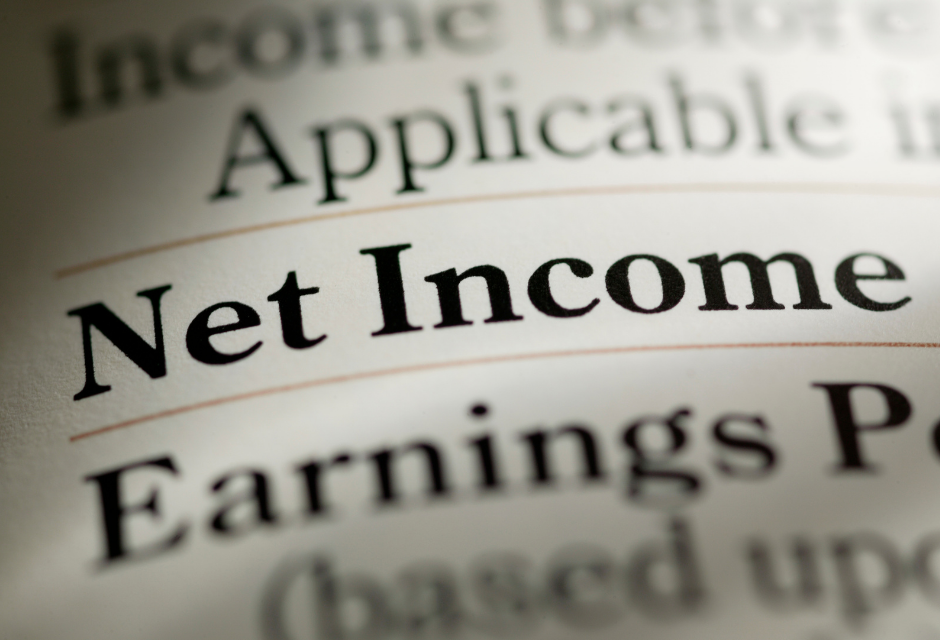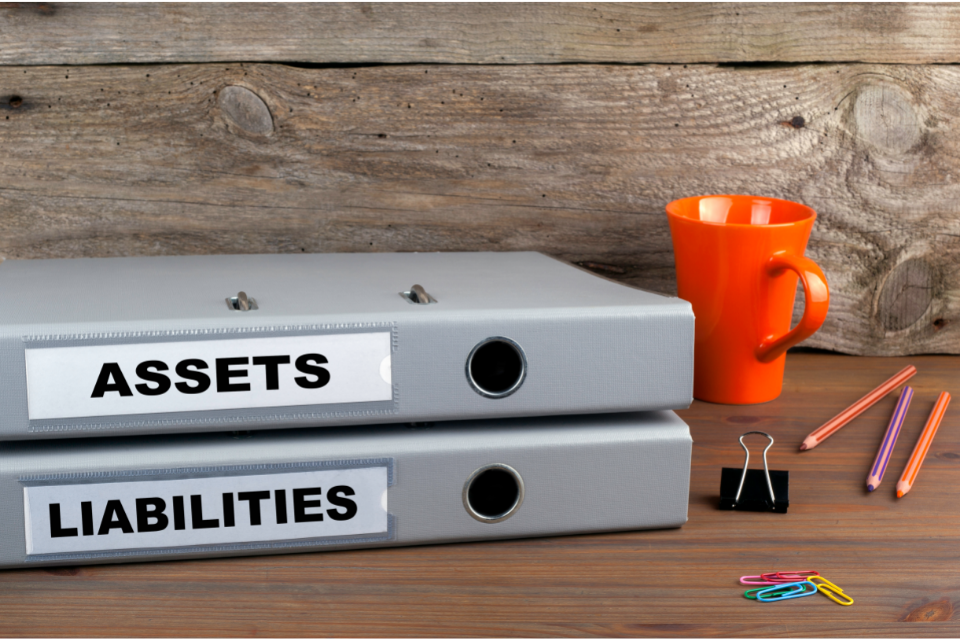According to the Farlex Financial Dictionary, owner's equity can be used to determine a person's or a company's creditworthiness, as well as to evaluate the company's value when the owner or shareholders want to sell it.
Every year, your net worth will fluctuate. How much of the change in your net worth was due to asset inflation or deflation? Have you ever inherited or been given a gift? Is it because you made more money than was used or spent on taxes?
Your statement of owner's equity provides answers to all these questions.

In today’s guide, we’ll learn everything associated with statement of owner’s equity. Let’s take a look on the table of content that we’ll discuss in this guide:
- Understanding Statement of Owner’s Equity
- Purpose of Statement of Owner’s Equity
- Components of Statement of Owner’s Equity
- Working of Owner’s Equity
- Generate Statement of Owner’s Equity with Examples
- Documenting Owner’s Equity
- Advantages of Owner’s Equity
- Drawbacks of Owner’s Equity
- Learn from Statement of Owner’s Equity
- How Deskera Can Assist You?
Let’s Explore!
Understanding Statement of Owner’s Equity
The statement of owner’s equity is a financial statement that reports changes in equity from net income (loss), from owner investment and withdrawals over a period of time.
Further, the statement of owner’s equity is one of the shorter financial statements because there aren’t many transactions that actually affect the equity accounts.
It usually shows the net profit or loss for the period, as well as the owner's payments and withdrawals.

Moreover, a financial statement that reveals how much money a company has is the owner's equity statement, also called as changes in owner's equity or the statement of retained earnings.
It is further commonly used by partnerships, sole proprietorships, privately held companies, and limited liability companies (LLCs).
Corporations employ a more comprehensive shareholder's or stockholder's equity statement, which incorporates stock and dividends components.
Purpose of Statement of Owner’s Equity
This crucial business tool assesses your business's overall financial health and stability. The equity statement shows if a small business owner plans to put more capital to offset shortages or if profits may be increased.
While the final balances of owner's equity are shown on the Balance Sheet, it might be difficult to determine what produced the changes in the owner's accounts, particularly in larger enterprises.
Further, the Statement of Owner's Equity assists financial statement users in determining what causes contributed to a change in the owners' equity during the accounting period.
Users of financial statements can utilize the Statement of Owner's Equity to figure out what factors led to a change in the owners' equity during the accounting cycle.
Moreover, small business entrepreneurs use this information to make decisions about expansion and diversification. A company's financial health and ability to meet its obligations is shown by positive equity.
On the other hand, negative equity could imply impending insolvency or an inability to pay bills.
For example, creditors may reject giving money to a business if it is unable to demonstrate its ability to financially support itself without financial infusions from the owner.
Components of Statement of Owner’s Equity
Following we have discussed crucial components of statement of owner’s equity. Let’s learn:
Contributed Capital (also referred to as Paid in Capital)
You will almost likely need to invest money to get a business off the ground. This sum represents your initial capital investment.
Furthermore, you can also add more money to your business anytime you think it's required. Your owner's equity statement will reflect all of these contributions.
The value paid by investors for the company's shares is tied to the contributed capital in limited companies and corporations.
Moreover, it's crucial to remember that capital contributions don't have to be in the form of equity stock sales or cash infusions.
Non-cash assets can also be used to make capital contributions to businesses. Other assets, such as a workstation, some equipment, or an automobile that will be owned by the company, can be contributed.
Net Income
A company's net income is computed after subtracting COGS, operational expenses, and taxes.
Further, net income is a widely used metric for assessing a company's financial performance. It does, however, only reveal part of the narrative.
Please remember that not all of the company's profits will be reinvested. The withdrawals of the owner must be considered.
Owner’s Withdrawals
Owner's withdrawals refer to the amount of money taken out of a business by the owner (in partnership or sole proprietorship). Furthermore, interest and dividends are the same thing (which is the general term for companies).
A dividend payment is required to transfer cash to a corporation's investor. The core, however, stays the same: net income is used to fund both dividends and withdrawals.
We acquire retained earnings when we deduct the owner's withdrawals from the net income.
The amount of profit a corporation has generated but not paid to its shareholders is known as retained earnings, also known as undistributed profits or accumulated earnings.
Furthermore, these are profits that have been put back into the company. Shareholders believe this to be their property and a vital source of potential development.
Retained earnings are also known as reinvested earnings.
Working of Owner’s Equity
Owner's equity is created when the owners put capital in the business, and it grows (or shrinks) as the business makes profits (or loses).
The statement of owners Equity's philosophy is to reconcile the opening and closing balances of equity accounts in a firm and communicate this information to external users.
The Statement of Owners Equity is determined by two basic sorts of changes:-
(1) Changes resulting from transactions with the owners (shareholders), such as dividend payments, issuance of new shares, and so on;
(2) Changes in net income, revaluation of fixed assets, total comprehensive income, changes in fair value of available for sale investments, and other factors.
The Statement of Owner's Equity in Small and Midsize Businesses vs. Big Mega corporations appears considerably different.
Let’s know about both of them:
Small and Mid Size Firms
In smaller businesses, changes in owner's equity can be simple and uncomplicated.
They grow as a result of the contributions of the owners and the profits of the company.
Owner withdrawals, dividend distributions, and company losses all decrease them.
The formula for the Statement of Owners Equity is simple:
Many small and mid-sized businesses may opt to leave out a Statement of Owner's Equity from their accounting records.
By looking at the corporate profit (or loss) in the Income Statement, as well as any Ownership Contributions or Cash Dividends in the Cash Flow from Financing Activities in the Statement of Cash Flows, the user of the Financial Statement can determine changes to the equity accounts.
Larger Corporations
The Statement of Owners Equity is generally referred to as the Statement of Changes in Stockholders Equity in larger organizations since a corporation offers ownership shares called as capital Stock.
Check the listed example of Amazon (larger corporation) below. It will help you understand about statement of stockholder's equity in a much better manner:
The Statement of Shareholders' Equity is often written in vertical format, with equity components appearing as column headers and changes during the year appearing as row headings, as seen above.
Generate Statement of Owner’s Equity with Examples
A typical statement of owner’s equity example starts with the three-line heading. It includes:
- Company’s name at the Top
- Title of the Report
- Date for which the statement is being prepared
Format of Statement of Owner’s Equity
Beginning equity balance
- Plus:
- Net Income
- Owner’s contributions
- Less:
- Net Loss
- Owner’s withdrawals
Important Note:
Statement of Owner's Equity is the title of the report. This is what sole proprietorships are called. Furthermore, the term "Statement of Partners' Equity" is used for partnerships, whereas "Statement of Stockholders' Equity" is used for corporations.
Example 1:
Consider a corporation called XYZ Corporation has a $4,000 initial balance of owner's equity on January 1, 2021. The company is now raising funds from equity investors in the amount of 280 million. In addition, the corporation had a net profit of $1,000 million during the year. Similarly, there were some loses from some non-operating activities with $200 million.
Required: Prepare company’s Statement of Owner’s Equity
Example 2:
Mike has a business called World Travel Limited. At the start of a reporting period, i.e. January 1, 2021, the organization has $150,000 in owner's equity. Mike has now made a $10,000 investment in his company. Additionally, the entity gets a total of $20,000 during this time.
Mike needed money for an inappropriate scenario and had to withdraw $3000 from the capital account, despite the fact that the company had never lost money since its existence.
Required: Prepare company’s Statement of Owner’s Equity of Mike World Travel Limited
Points to be taken into consideration:
- Capital grows as a result of income. Expenses lower it. Income minus expenses equals net income. As a result, net income would boost the capital account. A net loss occurs when expenses surpass revenue. In this instance, the capital account will be depleted by the net loss.
- Withdrawals or losses are showcased in the brackets as a sign of negative or minus.
Documenting Owner’s Equity
On a sole proprietorship's balance sheet, the owner's equity is represented on the line for the owner's or partner's capital account. Owner's equity appears on the balance sheet as shareholder's equity or stockholder's equity if the company is a corporation.
A second document that reports changes in a company's owner's equity is a statement of owner's equity. It is also known as an equity statement, a statement of changes in equity, or a statement of retained earnings.
Further, profits, dividends, and owner withdrawals are just a few of the elements that might affect owner's equity, and they must all be disclosed on an owner's equity statement.
As a small business owner, knowing how to calculate and record owner's equity on an accounting statement will help you keep track of the net value of your company and its assets. Eventually, you'll be prepared to illustrate a potential lender or buyer that your company is in great shape once you have that information.
Advantages of Owner’s Equity
Following we have listed some major advantages of owner’s equity. Let’s learn:
Lower Risk:
A self-sufficient business is one that is reliant on equity rather than external sources of capital such as debt. In the event of a business collapse, creditors may declare bankruptcy, but owner would never do so. As a result, lenders associate higher equity with a lesser risk of default.
New Capital Infusion:
One of the appealing aspects of owner's equity is that it is distributed among the business's owners or partners. The stock in the company can be offered to new owners, or new partners can be brought in.
Unless it becomes a corporate entity, there are no significant limits on additional capital infusions. The firm's competence will grow as a result of the addition of new partners.
Ownership is not Liability:
You are not compelled to pay interest on ownership since it is not a liability in the same way that we are compelled to pay interest on debt capital.
Moreover, there are no financing fees that could turn the business into an issue. You can, however, pay a dividend to preference capital as well as a dividend to equity owners if desired.
Drawbacks of Owner’s Equity
In most cases, having owner's equity on the balance sheet has no disadvantages. However, we can identify the following points as negatives from various perspectives:
Rate of Change in Capital:
Finance companies conduct a comparison analysis of how total capital has changed throughout the years. The expanding trend demonstrates the company's profitable operations and reflects the owners' strategies.
The decreasing trend, on the other hand, implies losses. Finance providers may interpret this as a negative indication and refuse to extend the loan line.
Equity Capital:
Although equity capital does not require interest payments, the owners expect a considerable return from the business because they are assuming a significant risk. This cost of anticipation is much higher than the cost of loan financing.
Ownership Dilution:
We appreciate the new financial inflow. However, this is more common in corporate entities, where the main owner's part or interest (who began the business) diminishes when additional investors enter the business.
Furthermore, dilution of ownership is the lowering of one's own share proportion. The voting rights are linked to the equity capital. The more the dilution of stake, the more control is dispersed among many hands.
Every proposal in such a situation requires the approval of a majority of the owners. This causes the management's decision to be delayed. As a result, an increase in owner equity results in a loss in percentage ownership and, as a result, a commensurate reduction in control.
Ultimately, owner's equity might be defined as the money contributed by the owners, which increases only if the business thrives. As a result, the proprietors must concentrate only on growing the firm and keeping expenditures under control.
However, it's easier said than done, and this is the most difficult aspect of the economy. Because owners are exposed to several risks such as industry risk, product risk, financial risk, and so on, they must deal with them all in order for the business to thrive.
Learn from Statement of Owner’s Equity
The change in retained earnings, contributed capital, and market valuation are added together to calculate the overall change in net worth. This is the proportion by which the net worth has increased or dropped over the previous year.
Furthermore, the total change in net worth is added to the beginning net worth to arrive at the ending net worth. This net worth at the end of the year is the same as the net worth on your year-end financial statements.
As discussed in the starting of this guide, statement of owner’s equity snapshot depicts the activity of cashflow through a business over a specified timeframe or accounting period.
How Deskera Can Assist You?
To make accounting of your expenses a hassle-free process, you should use Deskera Books.

Deskera Books is online accounting software that will make your processes of financial reporting and auditing easier, faster, and more efficient.
Deskera Books includes pre-configured tax codes, accounting regulations, and balance sheets. This will ensure that you don't miss out on the tax advantages of deductible expenses. It will also keep track of all of your costs and keep your financial records and KPIs up to date in real time.
Final Takeaways
Now that we've reached the end of this extensive guide, we've compiled a summary of significant sections for your future reference. So, let's get this part started:
- The statement of owner’s equity is a financial statement that reports changes in equity from net income (loss), from owner investment and withdrawals over a period of time.
- A financial statement that reveals how much money a company has is the owner's equity statement, also called as changes in owner's equity or the statement of retained earnings.
- This crucial business tool assesses your business's overall financial health and stability. The equity statement shows if a small business owner plans to put more capital to offset shortages or if profits may be increased.
- Non-cash assets can also be used to make capital contributions to businesses. Other assets, such as a workstation, some equipment, or an automobile that will be owned by the company, can be contributed.
- A company's net income is computed after subtracting COGS, operational expenses, and taxes. Further, net income is a widely used metric for assessing a company's financial performance.
- Owner's equity is created when the owners put capital in the business, and it grows (or shrinks) as the business makes profits (or loses).
- The statement of owners Equity's philosophy is to reconcile the opening and closing balances of equity accounts in a firm and communicate this information to external users.
- Owner's withdrawals refer to the amount of money taken out of a business by the owner (in partnership or sole proprietorship).
- The amount of profit a corporation has generated but not paid to its shareholders is known as retained earnings, also known as undistributed profits or accumulated earnings.
- The statement of owners Equity's philosophy is to reconcile the opening and closing balances of equity accounts in a firm and communicate this information to external users.
- The Statement of Owners Equity is generally referred to as the Statement of Changes in Stockholders Equity in larger organizations since a corporation offers ownership shares called as capital Stock.
- On a sole proprietorship's balance sheet, the owner's equity is represented on the line for the owner's or partner's capital account. Owner's equity appears on the balance sheet as shareholder's equity or stockholder's equity if the company is a corporation.
- As a small business owner, knowing how to calculate and record owner's equity on an accounting statement will help you keep track of the net value of your company and its assets. You'll be prepared to illustrate a potential lender or buyer that your company is in great shape once you have that information.
- A self-sufficient business is one that is reliant on equity rather than external sources of capital such as debt. In the event of a business collapse, creditors may declare bankruptcy, but owner would never do so. As a result, lenders associate higher equity with a lesser risk of default.
- One of the appealing aspects of owner's equity is that it is distributed among the business's owners or partners. The stock in the company can be offered to new owners, or new partners can be brought in.
- The change in retained earnings, contributed capital, and market valuation are added together to calculate the overall change in net worth. This is the proportion by which the net worth has increased or dropped over the previous year.
- Equity capital does not require interest payments, the owners expect a considerable return from the business because they are assuming a significant risk. This cost of anticipation is much higher than the cost of loan financing.
Related Articles











